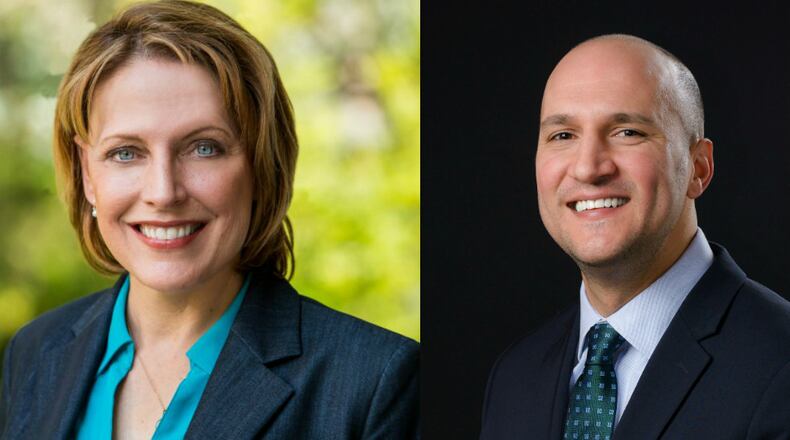”They need the dignity of work, they need reasonable wages they can support their family on,” she said. “You cannot do anything if you don’t attack jobs. You can’t work on the opioid crisis if you don’t make jobs a priority. You cannot work on infrastructure if you don’t make jobs a priority. You cannot work on improving our economy and ur growth into the future without making jobs a priority now.”
RELATED: Local jobless rates fall in April
Ohio’s seasonally adjusted unemployment rate is 5 percent, which 0.6 percent above the national average.
Pillich is one of five announced candidates seeking the Democratic Party’s nomination for governor. Ohio Sen. Joe Schiavoni, D-Boardman, is another candidate, and he agreed with Pillich.
“Job security and job creation is vitally important to the future of our state, and as I talk to people that gets brought up in every single election,” he said.
Pillich and Schiavoni spoke exclusively with this new outlet during last week’s Butler County Democratic Party’s annual dinner. They were the only two Democratic gubernatorial candidates that attended.
Though jobs are needed in the state, they recognize that the opioid crisis is crippling families.
“We’re not going to be able to (attack the opioid crisis) by passing the legislation like the General Assembly has been passing in the last two months,” said Schiavoni about bills passed in the GOP-controlled Statehouse increasing penalties for fentanyl dealers and limiting prescriptions to seven pills a script.
“That does help the thousands of Ohioans that are struggling with addiction and the families that are being devastated.”
Schiavoni has proposed allocating 10 percent of the $2 billion rainy-day fund “to deal with educating kids, giving police the dollars at the local level in order to deal with the problem but a real rehabilitation system on the back end.”
“It costs money, it takes time, sometimes it takes two or three times,” he said.
Pillich said there needs to be “a multifaceted approach to tackling the opioid crisis. We have to start with jobs.”
“If you have the dignity of work, you are less likely to fall into the despair where you need to self-medicate and travel down that precipitous path towards heroin,” she said. “On top of jobs we need to make sure we have prevention, so people don’t start using that.”
That includes Medicaid dollars are kept in Ohio which are taking care of thousands of Ohioans in treatment now. Expanded Medicaid in Ohio is under threat if the GOP’s health care plan is approved and signed into law.
RELATED: Portman pushing gradual Medicaid expansion cut instead of elimination
Pillich said there also needs to be support for the families of the addicts.
“Addiction is a disease that not only affects the user but their whole family as well,” she said. “And while that addict is in recovery in a recovery facility, someone needs to make sure the family unit gets help, too.”
Though helping addicts and families does not mean abandoning the state’s and country’s laws.
“We also have to make sure we enforce the laws,” Pillich said. “We have to have very tough enforcement to get these drugs off the streets and out of our state.”
The 2018 Ohio gubernatorial race is shaping up to be pretty crowded as Gov. John Kasich is term-limited. Other Democratic Party candidates include Dayton Mayor Nan Whaley, former Congresswoman Betty Sutton and former Wayne County Commissioner Dave Kiefer.
On the Republican side: Lt. Gov. Mary Taylor, Ohio Attorney General Mike DeWine, Ohio Secretary of State Jon Husted and Congressman Jim Renacci.
Miami University Regionals political science professor John Forren said this won’t be a primary where candidates can do much to distinguish themselves from the others on the issues.
“I think that the race on both sides, at least at this point, is still pretty wide-open,” he said. “There are no clear shoo-ins on either side.”
He said there are three important factors in this race: pre-established name recognition, campaign cash on hand and the strength of their political connections.
“This is a race that may end up being shaped in really important ways by events and developments,” he said. “For instance, public attitudes about the Trump presidency, which our state-level candidates really don’t have any direct control over at all.”
About the Author

